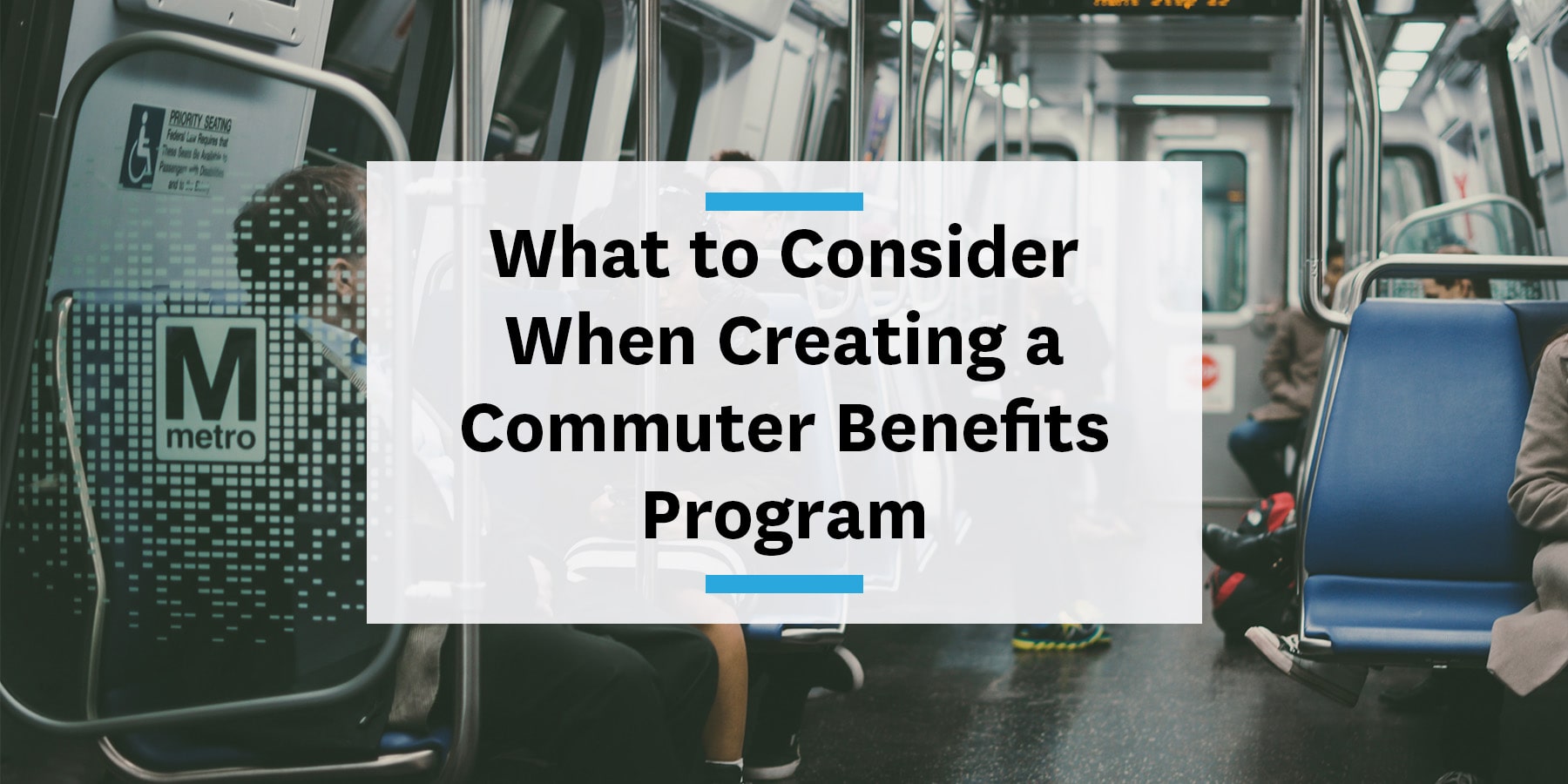Do your employees travel more than 10 miles to and from the office each day? If so, you probably know long commutes can drain employees’ energy, enthusiasm, and pocketbooks. Long commutes put employees at risk for burnout, making them 2.6 times more likely to leave your company. They can also cause health problems such as high blood pressure and decreased levels of happiness. Fortunately, businesses can offset the harmful effects of long commutes with programs to help make long-distance working less stressful. Maybe you need to consider updating your commuter benefits program.

We’ll show you which adjustments and allowances to consider when creating employee commuter programs, such as:
- Providing employees with flexible work and commuter benefits
- Creating office spaces with commuters in mind
- Understanding when to consider office relocation
You can use the information in this article to form a commuter benefits package that helps increase employee retention rates, worker engagement, and overall office productivity.
Offer employees flexible work options
Employees with long commutes are susceptible to burnout. How long can someone withstand 3 hours a day in traffic before they start looking for other opportunities? Providing flexible work options is a great way to help your employees have better commutes and avoid burnout. Some ideas can include:
Remote working
This can be several days per week or month when employees can work from home. This cuts back on travel hours, reducing the chances of employee burnout, and can increase job satisfaction.
Flexible work
Flexible work options, on the other hand, allow employees to structure their own week to reduce the demands of their commutes. This can contribute greatly to employee work-life balance. Employees with longer commutes can add hours onto their work days instead of spending it on the road. Working remotely gives employees their time back.
Non-traditional hours
These commuting times can be options such as 7 a.m. – 3 p.m. or 11 a.m. – 7 p.m. allow workers to travel during hours outside of peak traffic, reducing the amount of time they spend on the road or en route.
Around 75% of global employees spend at least half their workweek outside the office, and consider flexible work options the “new normal.” Some businesses believe that remote work options isolate employees, but research by the Gallup organization suggests flexible work options actually lead to higher levels of employee engagement.
In most cases, employee engagement is a direct result of management style, according to the 2018 Employee Engagement on the Rise in the U.S. report. While remote work can lead to higher employee engagement, flexible work schedules should still match the structure and nature of your company.
Some companies operate more collaboratively than others, and employees who aren’t able to communicate in person with their colleagues sometimes miss out on critical information. We suggest looking into tools like Slack, Zoom, or Asana to stay connected out of the physical office.
Design commuter benefits that fit your company
Commuting is an inevitable part of work, and making it a financial burden can turn commuting into a daily hassle. Luckily, there’s no shortage of commuting benefits you can offer your employees. In order to create a truly effective and appealing commuter benefits program, your company needs to be aware about how its employees get to and from the office.
Some employees will have longer commutes with limited access to public transit. By setting up a carpool program, your company can lower your employee drive-alone commute rate. To encourage buy-in, you can offer preferred parking for employees who carpool together. For urban travelers who rely on public transit, nearly every major metro area has programs your company can partner with to offer tax-advantaged benefits.
Nowadays, there are programs that even cover rideshare and platform-based transportation. The better you know your employees and their preferences, the better you can design a program that fits their interest.
Consider office relocation if necessary
About one-third of employees travel 30 minutes or more to work, according to Clutch’s research. This runs directly counter to employee preferences; employees say the most important factor of an office location is whether it’s near their home. In fact, employees consider working in a luxury office near restaurants and coffee shops less than 3 times as important as whether a building is close to home.
As a result, office location can also have an impact on your employee retention and recruiting efforts. If you’re having trouble attracting and retaining talent, consider moving to a location closer to where your employees live — or providing coworking credits for employees who don’t want to travel to the office every day.
Commuter benefits programs may improve engagement and productivity
Long commutes affect employees’ health, happiness, and productivity. Consider providing commuters with flexible work options, creating productive office spaces, or relocating your office to accommodate employees who face long commutes.Grayson Kemper is a Content Manager for Clutch, a data and data-driven platform that connects businesses with services providers. Using Clutch, businesses can research, identify, shortlist, and select business services that match their needs.




